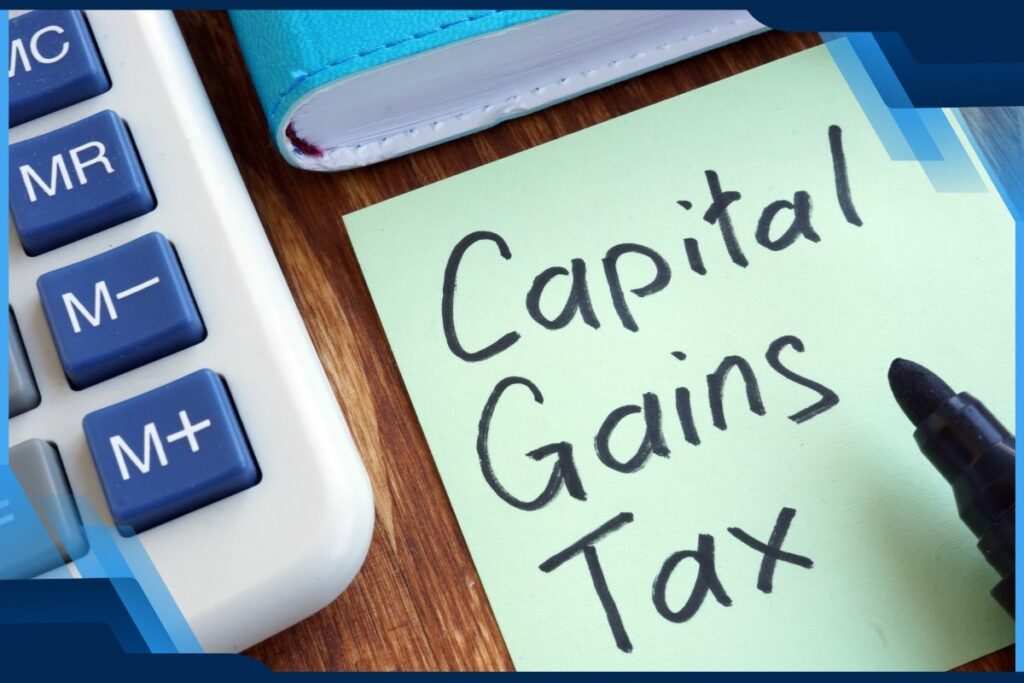Understanding Capital Gains Tax in Australia

When it comes to tax time in Australia, one term you’ll likely hear a lot is capital gains tax (CGT). While it might sound complicated, capital gains tax is simply the tax you pay on the profit made from selling assets, such as property or shares. For many Australians, understanding how CGT works is crucial for managing investments and ensuring they meet their tax obligations. In this article, we’ll break down the essentials of capital gains tax, making it easier to understand and manage when the time comes.
What is Capital Gains Tax?
Capital gains tax (CGT) is a tax levied on the profit (or ‘capital gain’) made from selling certain types of assets. The gain is the difference between what you paid for the asset and what you sold it for. CGT was introduced in Australia in 1985, and it applies to assets acquired on or after that year.
CGT is part of your income tax, meaning the tax payable on your capital gains is calculated as part of your annual income tax return. If you’ve made a loss on the sale of an asset, it’s referred to as a capital loss. While CGT is a major factor for many Australians with investments, it’s important to understand that it only applies to assets sold for more than they were bought.
What is a Capital Gain or Capital Loss?
A capital gain occurs when the selling price of your asset exceeds the price you originally paid for it. For instance, if you bought a house for $500,000 and later sold it for $600,000, the $100,000 profit is your capital gain. In contrast, a capital loss happens when the asset sells for less than its purchase price.
In Australia, you can offset your capital losses against your capital gains. If your losses exceed your gains, you can carry them forward to reduce future gains, but you can’t use these losses to reduce your taxable income from other sources, such as salary or business profits.
Assets Subject to CGT
Most assets in Australia are subject to capital gains tax, including:
- Real estate: Whether it’s your home or an investment property, selling real estate often triggers CGT unless it’s your primary residence and qualifies for an exemption.
- Shares: Selling shares in companies or other securities can also attract CGT, especially if you’ve held them for investment purposes.
- Cryptocurrency: In recent years, selling digital currencies like Bitcoin can result in CGT obligations.
- Business assets: If you own a business and sell its assets, such as equipment or intellectual property, CGT may apply.
There are some notable CGT exemptions though. For example, your primary residence (the home you live in) is generally exempt from CGT unless you’ve used it for income-producing activities like running a business. Other exemptions include selling personal items such as cars or household goods.
How is CGT Calculated?
CGT is calculated based on the difference between what you paid for an asset (the cost base) and what you sold it for. The cost base includes the price of the asset, plus any associated costs such as legal fees, stamp duty, and improvement costs.
When you sell an asset, the capital gain is added to your taxable income. For example, if your taxable income is $80,000 and you make a capital gain of $20,000, your taxable income becomes $100,000.
However, if you’ve held the asset for more than 12 months, you may be eligible for a 50% discount on the gain. For instance, if you make a $20,000 capital gain on an asset held for over a year, you’ll only need to pay tax on $10,000.
The capital gains tax rates for 2024 will depend on your marginal tax rate, which is determined by your overall income. This means CGT could range from 0% to 45%, depending on your tax bracket.
How to Report Capital Gains and Losses
You need to report your capital gains and capital losses when lodging your annual tax return with the Australian Taxation Office (ATO). Here’s how it works:
- Calculate the capital gain or loss for each asset sold during the financial year.
- Deduct any applicable capital losses from your capital gains.
- If eligible, apply the 50% CGT discount for assets held for over a year.
- Include the final capital gain amount in your taxable income for the year.
You can use tools like the capital gains tax calculator available on the ATO’s website to simplify the process.
Implications of Not Complying with CGT Regulations
Failing to comply with Australian tax laws, particularly when it comes to CGT, can result in serious consequences. The ATO has systems in place to track asset sales, and penalties can be imposed for not reporting capital gains or incorrectly calculating CGT. Penalties may include fines, interest charges, or even legal action in severe cases.
It’s crucial to keep accurate records of asset purchases and sales, as this will be necessary when calculating your capital gain or loss. Missing documents can lead to errors and additional scrutiny from the tax office.
Recent Changes and Updates
The capital gains tax threshold and regulations have evolved over the years, and the Australian government often reviews these laws to reflect changes in the economy and tax policies. For 2024, one key area under scrutiny is the treatment of investment properties and the continued tightening of CGT exemptions for certain assets.
Recent proposals include changes to CGT on property sales, particularly investment properties, as the government seeks to address housing affordability by reducing tax incentives for property investors. Additionally, the rise of cryptocurrencies has prompted new guidance on how digital assets are taxed.
It’s important for Australians to stay informed about any changes to CGT laws to ensure compliance and to optimize tax strategies.
Conclusion
Understanding capital gains tax in Australia can seem complicated at first, but with the right knowledge, it’s manageable. Whether you’re selling an investment property, shares, or other assets, knowing how CGT works and how to report it is essential for meeting your tax obligations. By keeping up with changes in Australian tax laws and utilizing tools like the capital gains tax calculator, you can better navigate the complexities of CGT and reduce the impact on your finances. Always remember to seek advice from tax professionals or financial advisors to ensure you’re making the most of CGT exemptions and deductions.
Are you interested in strengthening your financial knowledge? We have additional content to help you learn as much as possible:
Superannuation: Learn the essentials of planning for a secure retirement in our Superannuation Guide. Discover how superannuation works, its benefits, and tips for maximizing your retirement savings.
Credit Score: Want to know how your credit score affects your financial health? Check out our Credit Score Decoded guide to understand its impact on loan approvals, interest rates, and ways to improve it.
Budgeting: Whether you’re a beginner or refining your strategies, explore our Budgeting and Saving Handbook for tips on achieving financial stability and building a more secure future.
Check out these guides to gain confidence and control in every aspect of your financial life!
FAQ
- What assets are exempt from capital gains tax in Australia?
Most personal assets, such as your primary residence, personal cars, and some collectibles, are exempt from CGT. However, investment properties and shares are typically subject to CGT. - How can I reduce my capital gains tax in Australia?
To reduce CGT, you can hold assets for more than 12 months to qualify for the 50% discount. Additionally, offsetting capital losses from other investments can help reduce your overall gain. - Do I have to pay CGT if I inherit property?
In Australia, inherited properties are generally not subject to CGT at the time of inheritance. However, if you later sell the property, CGT may apply based on the asset’s value at the time you acquired it. - What is the capital gains tax rate for 2024?
The capital gains tax rates for 2024 align with your marginal income tax rate, which can range from 0% to 45%, depending on your overall income. - How do I calculate CGT on an investment property?
To calculate CGT on an investment property, subtract the cost base (original purchase price plus any related costs) from the sale price. If you’ve held the property for more than 12 months, apply the 50% CGT discount before adding the gain to your taxable income.
Related content

First Home Buyer Australia: Grants and Loan Tips You Need to Know

Understand Your Money Mindset: Make Smarter Choices with Behavioural Finance

How BNPL Is Changing Everyday Aussie Spending

Tax File Number explained: what it is, why it matters, and how to apply and protect yours

Tips for Improving Your Creditworthiness
